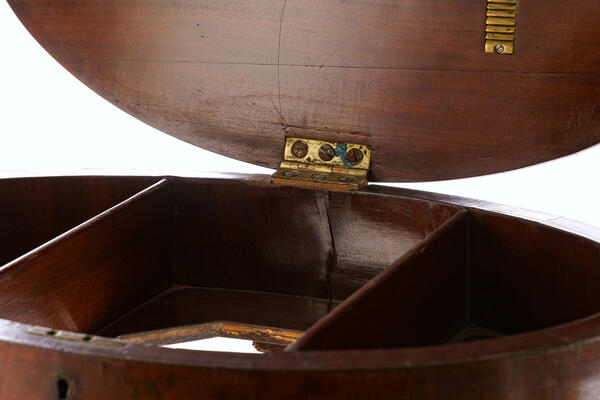In the past, needlework was one of the main forms of leisure activity for women. The ability to sew, embroider, knit and weave was considered a feminine virtue. Special furniture for these activities started to appear in wealthy homes.
Such needlework tables were typically compact and elegant, often collapsible so they could be repositioned easily. Some had retractable tops, screens, and other design features.
A key characteristic of these tables was their numerous drawers and compartments, which stored fabric, ribbons, lace, knitting and embroidery needles, and other sewing supplies. These compartments were typically arranged in tiers, following the shape of the table. They were veneered and bent in such a way that these drawers remained unnoticed by visitors.
When folded, it was difficult to determine the main purpose of this item of furniture. Generally, such a table could function as a writing and drawing stand, as well as a jewelry case. Needlework tables were decorated with intricate inlays, which made identification of these interior objects even more challenging. They could be inlaid with mother-of-pearl, semiprecious stones, ivory, porcelain, or other valuable materials.
The needlework table on display at the Rybinsk Museum is made of mahogany. The hinged lid is oval in shape. There are three compartments within the table, with holes for embroidery hoops in the center compartment. The base of the legs is decorated with chiseled details, reminiscent of vases. In the places where the legs are attached to the connecting frame there are projections decorated with miniature brackets.
Judging by the overall design, this object can be classified as belonging to the eclectic style that was popular in the 19th century. This style is characterized by a free choice of stylistic elements and a combination of different styles.
The table was brought to the Rybinsk Museum from the Borisogleb Estate in Mologa Uyezd, which was owned by the Musin-Pushkin family. For many years, the Borisogleb Estate was a single economic unit that included approximately 49,000 hectares of land.




